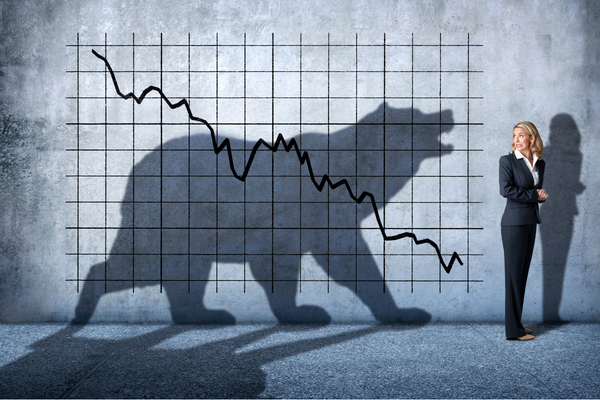
The S&P 500 ended September at its lowest level for the year, as a miserable year for investors continued with the stock market firmly in bear market territory and the bond market also seeing losses in the mid-teens.
Following something of a relief rally through the summer, as investors grappled with whether inflation had peaked and what its trajectory down may look like, the third quarter saw inflation and economic data reversing this view.
“It’s also easy to forget that the S&P 500 has already dropped 25% this year, a level that’s approaching the losses in an average recession,” according to an Oct. 14 article in Barron’s, The Trader. “That means investors could rightly expect more losses, but a good portion of the indexes losses are likely behind it.”
The Federal Reserve is now expected to end the year with interest rates between 4% and 4.5%, an astounding level to reach after beginning the year at 0%. With the Fed expected to continue to tighten, and inflation remaining stubbornly elevated, many Wall Street economists are forecasting a >50% chance of a growth slowdown or recession in 2023.
With markets down over 20% and an expectation for more volatility ahead, the actions investors take in this environment are more consequential than ever.
Below are a few bear market tips we’re encouraging investors to consider as we navigate this stretch of the business cycle together.
Remember that markets trend up over time.
Readers are likely well aware that markets have both up years and down years, but it may be surprising to know that markets have been positive in fully 75% of the calendar years since 1926. Also, while markets have seen losses of greater than -20% in six calendar years during that time, markets have seen gains of greater than +20% in 39 years during the period.
Markets have historically rewarded investors for being invested over long periods of time, with a long-term average annual return of around +10% on the S&P 500.
Consider that once markets fall -20% or more, it’s often an ill-advised time to sell.
Typically, when the markets are most fearful and the urge to sell out of securities is greatest, the economic benefit of such activity is weakest. Historically, on average, the S&P 500 has been up +21% in the 12 months following a -25% drop and up +63% five years later.
Some of the market’s best days are often clustered around some of its worst, and missing just a few of the best days can have a dramatically negative effect on long-term outcomes. Staying the course is often an investor’s best decision during bear markets and bouts of volatility.
Evaluate any opportunities that markets are offering.
It’s often when markets are most fearful that investors begin to see compelling opportunities for any cash on the sidelines. Historically, the stock market has rallied on average +25.1% in the 12 months after a bottom in the consumer sentiment index, an index that is currently near historic lows.
For conservative investors, while the Fed’s interest rate increases have led to a painful 2022, the result is now much more compelling yields for money markets, CDs and treasuries, with the 2-year U.S. Treasury yielding over 4.5%. We’d encourage investors to evaluate goals, time horizon and risk when considering current opportunities.
Reach out to your financial professional.
It’s more important than ever that investors have access to objective, professional and evidence-based advice on how to navigate this environment. We are happy discuss and analyze the questions and concerns that are specific to you during this time. Don’t hesitate to reach out to us at 800-858-6127, Ext. 6. We are here for you.
Market Updates at a Glance
The Dow Jones Industrial Average (DJIA) finished September at 28,725 down -8.84% for the month, down -20.95% year-to-date. The S&P 500 closed September at 3,586, down -9.34% for the month, down -24.77% so far for the year. The NASDAQ Composite lost -10.50% in September, down -32.40% for the year. Small-company stocks as measured by the Russell 2000, ended September down -9.73% for the month, down -25.86% year-to-date. Communication Services (-12.18%) was the worst performing sector in Q3.
